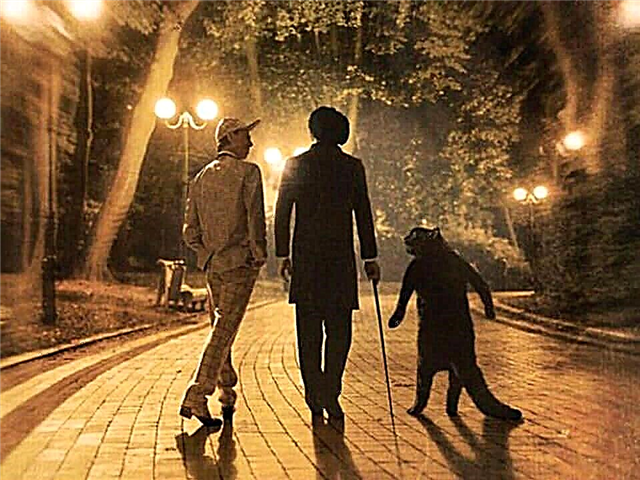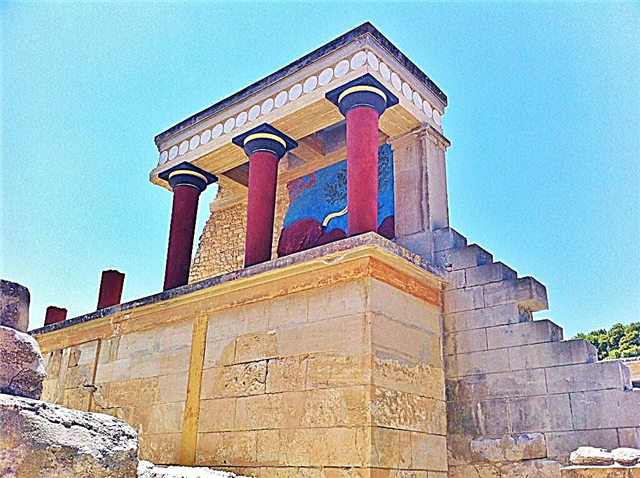Greece is a corner of earthly paradise, washed from all sides by gentle seas, heated from the bright blue of the heavens by the generous sun, located in a comfortable Mediterranean climate. The famous phrase of the Chekhovian hero: “Everything is in Greece” is not far from the truth. In a relatively small country with a thousand-year history, indeed, there is everything: mountains, forests, seas and rivers, an abundance of fish, fruits, grapes ... and all kinds of miracles inherited from Ancient Greece.
Interesting facts about Greece - we recommend reading.

How many legends were born here, how many works of ancient literature were left to us by ancient poets and writers, what a huge intellectual potential was laid by Greek thinkers and philosophers, which is still used by their distant descendants all over the world.

If you trace the entire history of the development of this state from the depths of the centuries BC, you can once again be convinced that only in such fertile places life was seething, only here there was a worthy place for the Gods, about whom legends were composed, supported by "material evidence" in the form of monumental remains grandiose buildings, one of which is the Labyrinth of the Minotaur.

Historical background about Minos
It reflects the era of the Minoan civilization, which originated in the XXX century BC, lasted until the XII century BC, and is named after King Minos, the ruler of the island of Crete. He created a powerful state with its own army and navy, which successfully developed thanks to the trade in copper, bronze and ceramics.
Beautiful palaces were erected on the island - a real miracle of architecture - for the wealthy nobility. Traces of the Minoan civilization were discovered in 1900 by the archaeologist from England Evans, who called it Minoan. Later it was found that the prosperous Cretan state was badly affected by a volcanic disaster that occurred on a neighboring island and caused an unprecedented tsunami that reached Crete.

The former might of the Minoans collapsed, and, having existed for even less than 3 centuries, went into oblivion, leaving the memory of the power-hungry and cruel king and his entourage.
What to bring from Greece - an overview of the best souvenirs.
Legend of the Minotaur
The mysterious labyrinth left after his reign has overgrown with legends associated with the mythological names of gods and people.
The inhabitants of Crete worshiped the bull, considering it a cult animal, like many ancient European tribes. Minos, like the rest of the Greek kings, had to sacrifice the bull to Poseidon. But one day he violated this duty, leaving the sacred animal with him. The angry God of the sea insidiously punished the obstinate Minos, instilling a vicious passion in his wife Pasiphae, who pervertedly sinned with the bull and gave birth to a humanoid creature with a bull's head, which was a diabolical punishment for the entire people of Greece.
By order of the king, the mighty Daedalus built an intricate labyrinth in which the unfortunate devil of hell, the terrible child of God's punishment, the Minotaur, was doomed. Obsessed with hatred of people because of his monstrous appearance, he demanded from the guilty king the most beautiful young men and women, whom he cruelly tormented, tearing them apart.

They were brought from Athens conquered by Minos and thrown into the unusual abode of the monster. The grief of the Athenians knew no bounds, but they were powerless against the vassals of Minos, sailing for the next victims. The noble Theseus, the son of King Aegeus, who became a courageous and strong youth, himself decided to destroy the ridiculous monster and went to Crete. He went down into the labyrinth, wandering through it, found the Minotaur and killed him. But before that, the wise Ariadne, the daughter of the Minoan king, saw the handsome hero and fell in love with him at first sight.
Ashamed of such a terrible brother and hating him, she gave the ball - "Ariadne's thread" in the hands of her beloved, so that she would serve as a guide and help Theseus get out of the intricate bends of the dungeon. Unwinding the thread, the young man, after the battle with the Minotaur, was able to safely get out of the gloomy refuge of the bull-man.
A modern look at the mythical labyrinth
There is a scientific opinion that in reality they are the remains of a huge monumental structure of the Knossos Palace, located in the vicinity of the Cretan capital - Heraklion. It amazes with its size and heap of countless rooms, interconnected by intricately curved passages, which can be conventionally considered a famous labyrinth, if we discard the discrepancy between the difference in the timing of the construction of the palace and the existence of the Minoan civilization.

However, people want to believe in miracles and consider the royal ruins of a gigantic structure of antiquity as a mysterious labyrinth. This unique rarity is not only valuable: it is a real museum of architecture and art of the Cretan state, evidence of the high level of development of society in BC.

Remains of walls and monumental columns that have stood for millennia illustrate the grandiose possibilities and skill of the builders. And bright, colorful wall images of graceful Greek women with amphoras in their hands are simply magnificent, as are the dancing beauties dressed in pretentious outfits.

The huge canvas depicts a sacred bull, sleek and mighty, on whose back the artist placed an acrobat in order to compare the strength and power of the deified animal with a small and weak person. But an intelligent animal is submissive to him, therefore, next to him are those to whom he obeys.
The painting of one of the ceremonial halls of the Palace is striking with its extraordinary aesthetics of decoration, grace of lines, cheerfulness of shades of numerous patterns. Images of outlandish totem animals with bird heads are posted everywhere. Even a semblance of a throne has been preserved, cast from an unknown material, over which time has no power.
Beautiful frescoes with frolicking dolphins look unusually expressive, despite a certain sketchiness of the image. How many hands of talented artists worked in these immense palaces, how many masters created such wonderful colors! The classic ornaments adorning the entrances around the perimeter amaze with their modernity. Looking at all this, you begin to think how true it is to say that history moves in a circle.
We also recommend going to see the Meteors in Greece.











